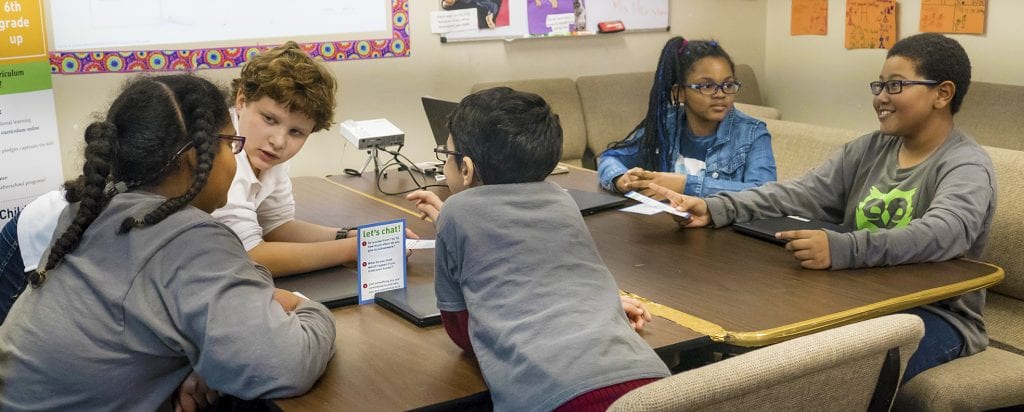3 Myths About Not Having Time for Social Emotional Learning
March 8, 2018

If there’s one thing teachers and principals agree on, it’s the value of Social Emotional Learning (SEL) programs. In a recent CASEL study, nearly all administrators and teachers regarded SEL as an important tool for improving school climates and student outcomes. But only a fraction of schools have adopted and fully implemented it.
So why are many schools not using SEL?
The given reasons given vary: some principals are wary of the level of training and support needed for successfully implementing it. Some worry about how they’ll assess these “soft skills.” Others are concerned about the administrative burdens associated with introducing SEL. Many can’t afford it.
But one concern trumps others. Nearly three quarters of teh CASEL study respondents (71%) say they worry they don’t have time for SEL. With so much expected of teachers, adding something new to their plate simply can’t be done.
Teachers work very hard, so principals do well to protect them from being overscheduled. But lurking below that justification are some misunderstandings about SEL implementation. We hear these a lot from schools, so it’s time to lay some of the more common myths to rest.
Myth #1: “We’d love to implement SEL, but we need to prioritize programming that delivers results on high-stakes testing. We just can’t afford to do much outside that.”
Much as principals like the idea of instilling values in their students and reshaping school cultures, those goals don’t matter where it counts most: state testing. Prepping for those examinations takes precedence over teaching kids “soft skills.” Making sure a ninth-grader can determine the area of a circle pays more dividends than training him to manage his emotions.
Or so the objection goes. But is it valid?
Not really. The available evidence supports the opposite point of view. Students who participated in SEL programs outperformed peers who didn’t by a margin of 11 points on standardized tests. Administrators tend to be less confident in SEL’s potential to improve test scores than they are of its capacity for molding good citizens, but the numbers tell a different story. And managing emotions can have a very direct impact on test scores. After all, students need that control and calm in order to focus on calculating an area of a circle.
Myth#2: “Our schedules are so tight. We can’t create the space to do SEL right.”
Schools finalize their calendars months in advance. These schedules reflect careful planning to maximize efficiency. Not much time is left once all the priorities are spoken for. Once the schedules are set, they feel fixed and immutable. Changing them requires so much paperwork, so many signatures, and so much internal communication that alteration seems impossible. So, as good as SEL sounds, many schools pass on it because they can’t find room for it.
 Plausible as it sounds, the appeal to tight schedules doesn’t convince. Schedules reflect priorities, and priorities reveal values. If you can’t find space for something, it’s because you don’t value what it contributes more than things on the calendar. Schools that acknowledge the benefits of SEL – improved student outcomes, growth in social skills, a deepened sense of community – but can’t find room for these programs in school still hold pep rallies, club meetings, and athletic events, even though these don’t boast the same benefits. If they really valued what SEL provides, they would prioritize it and find space in the schedule. Where there’s a will, there’s a way.
Plausible as it sounds, the appeal to tight schedules doesn’t convince. Schedules reflect priorities, and priorities reveal values. If you can’t find space for something, it’s because you don’t value what it contributes more than things on the calendar. Schools that acknowledge the benefits of SEL – improved student outcomes, growth in social skills, a deepened sense of community – but can’t find room for these programs in school still hold pep rallies, club meetings, and athletic events, even though these don’t boast the same benefits. If they really valued what SEL provides, they would prioritize it and find space in the schedule. Where there’s a will, there’s a way.
But that’s assuming new activities need their own dedicated space in the schedule, and that doing so creates tensions with existing programming. In many cases, the schedule conflicts don’t even exist. Many SEL programs are keyed to Common Core and state standards, making them easy to integrate with existing curricula. With some determination and planning, lessons on social and emotional well-being can be slotted into any number of places without disrupting a finalized schedule.
Myth#3: “We’ve got too many programs already addressing these things to add one more.”
Even if they don’t run SEL programs, schools do offer instruction, assistance, and reinforcement of topics social emotional learning addresses to certain populations (e.g., special needs students, high-risk kids, and students with behavioral issues). Those initiatives take time and coordination. Adding yet another activity to these programs can feel unnecessarily complicated and even redundant. So, many schools, though convinced of the value of SEL, stick with what they have.
 Unfortunately, teaching social and emotional learning only to the neediest populations doesn’t deliver the same advantages as offering it to everyone. Targeting high-risk students for interventions may improve their outcomes, but it won’t change school climates the way an SEL program can. After all, kids without documented needs for special attention could benefit from this training, too!
Unfortunately, teaching social and emotional learning only to the neediest populations doesn’t deliver the same advantages as offering it to everyone. Targeting high-risk students for interventions may improve their outcomes, but it won’t change school climates the way an SEL program can. After all, kids without documented needs for special attention could benefit from this training, too!
The best SEL programs integrate seamlessly with other behavioral initiatives like PBIS. Far from being redundant, teaching SEL reinforces them while extending their benefits to everyone. While it may take some coordination, the gains SEL contributes are too valuable not to find time for.
 Author: Ryan Woods, PhD, RW Contributor
Author: Ryan Woods, PhD, RW Contributor
Respectful Ways offers custom-tailored Social and Emotional Learning programs for elementary schools, middle schools and high schools. Take a look at our site and contact us for a free consultation.
This entry was posted in SEL News. Bookmark the permalink.


 Our 1st graders loved the Be Kind: It Feels Good course. The Kindness Hunt and bucket filling activities were the best. Very engaging.
Our 1st graders loved the Be Kind: It Feels Good course. The Kindness Hunt and bucket filling activities were the best. Very engaging. The Bored, Get Creative module was perfect for our 4th graders pre-winter break. We talked about things they could do if “bored”.
The Bored, Get Creative module was perfect for our 4th graders pre-winter break. We talked about things they could do if “bored”.